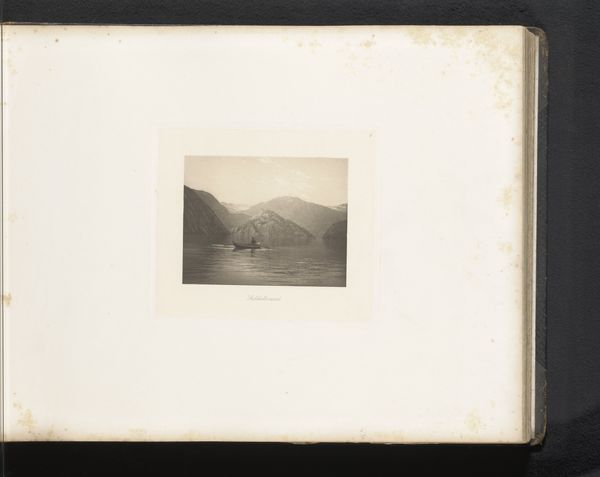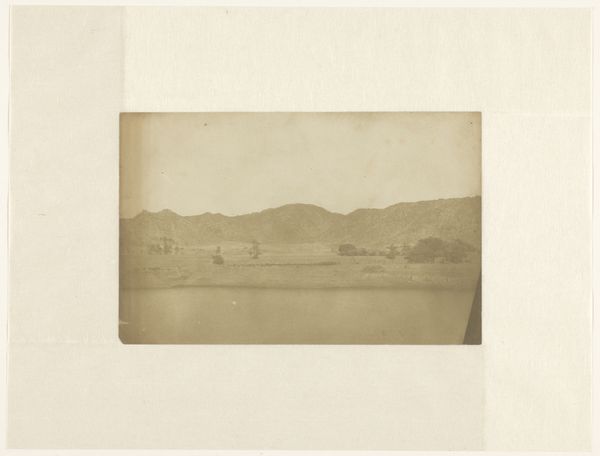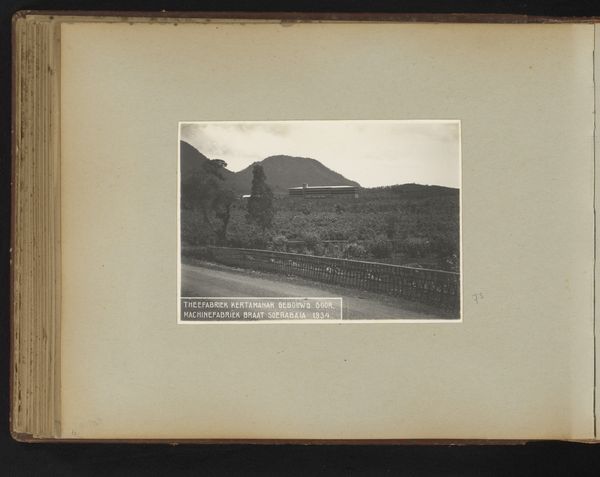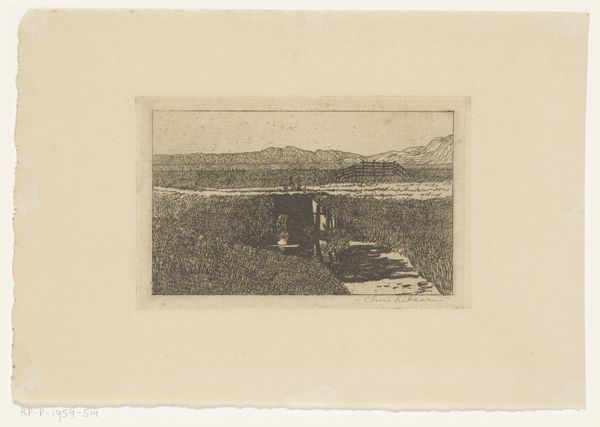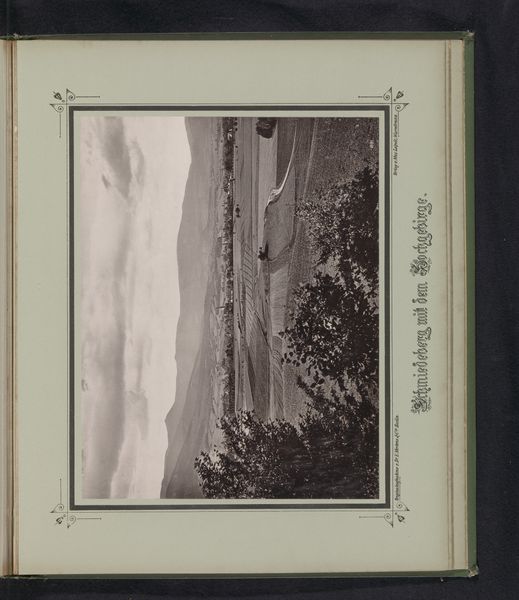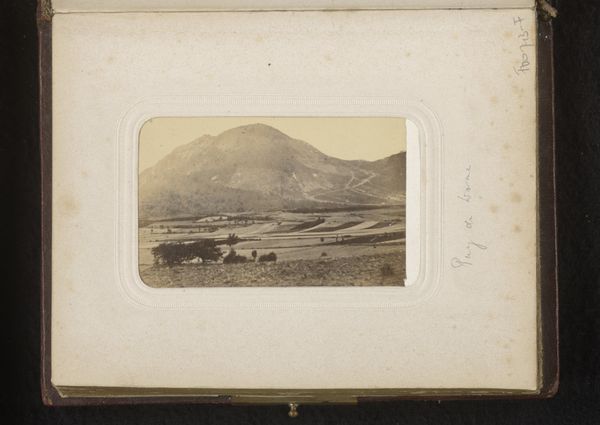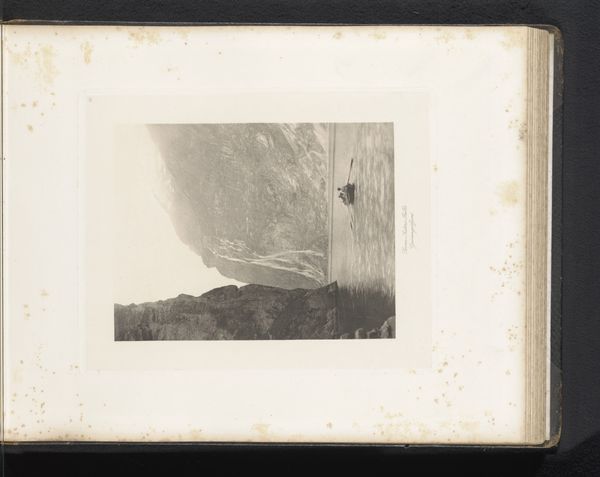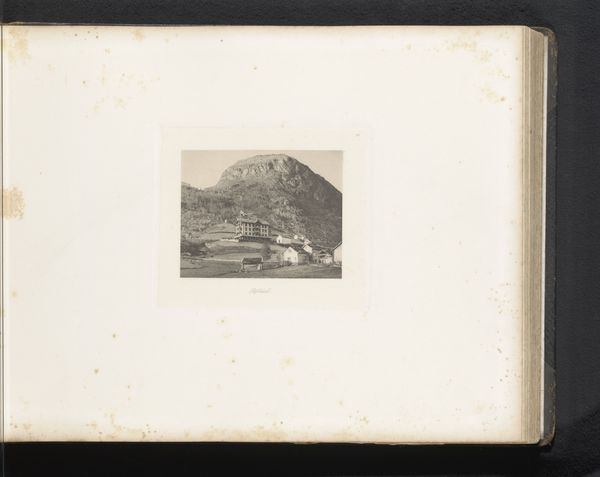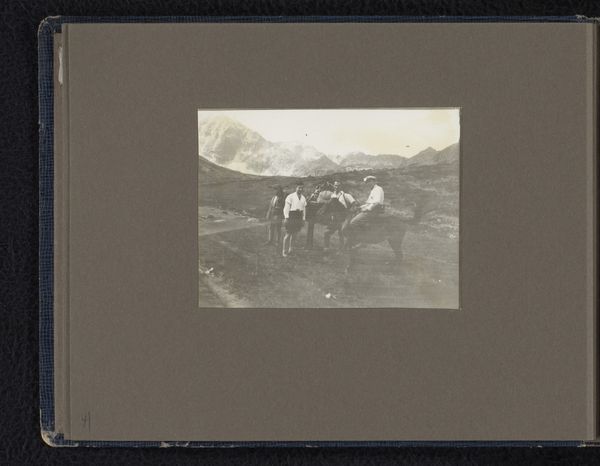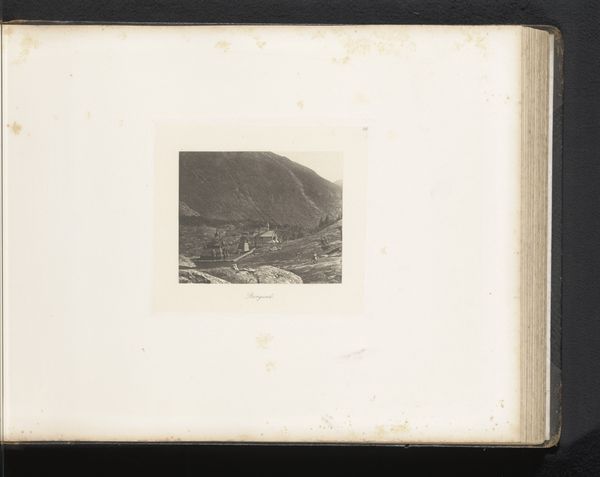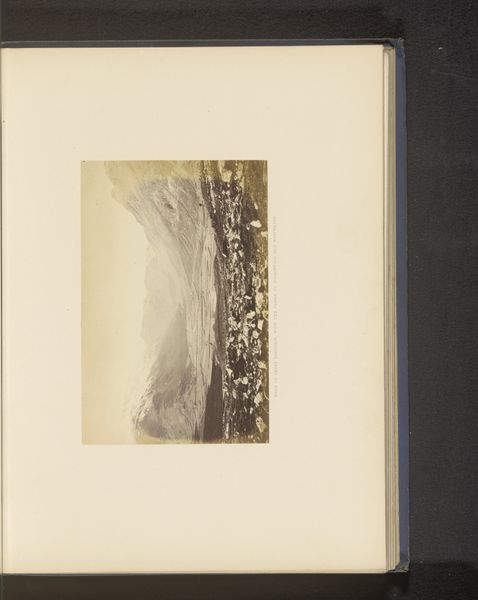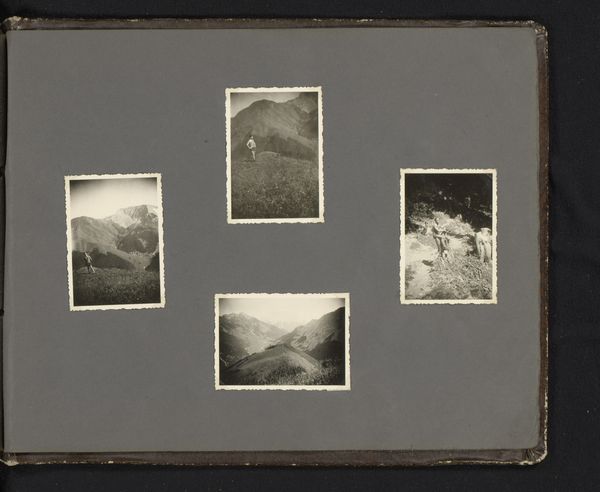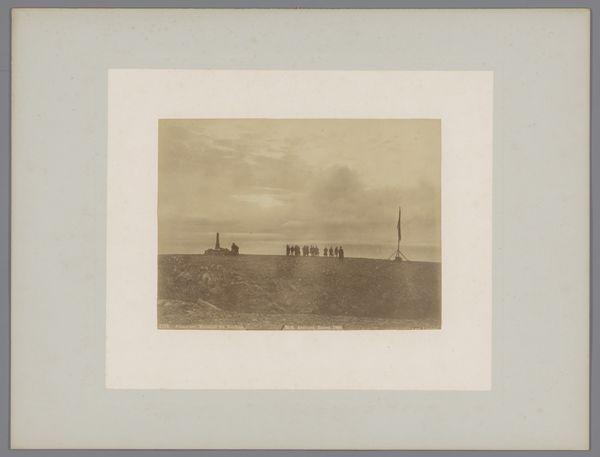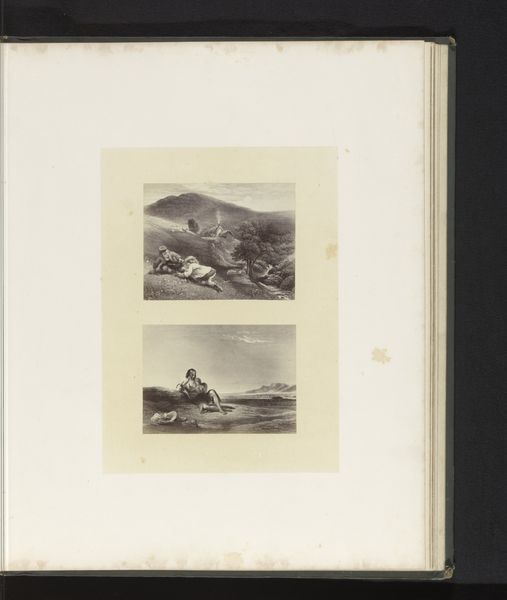
print, photography, gelatin-silver-print
#
still-life-photography
# print
#
landscape
#
tonal
#
photography
#
mountain
#
orientalism
#
gelatin-silver-print
#
watercolor
#
realism
Dimensions: height 145 mm, width 200 mm
Copyright: Rijks Museum: Open Domain
Editor: This gelatin-silver print, "Gezicht op de Taborberg in Israël" by N. Saba, dates from around 1880 to 1910. It depicts a serene landscape dominated by a gentle, rounded mountain. It feels almost like a staged photograph, capturing a quiet moment with someone leading a mule in the foreground. How do you interpret this work? Curator: This image resonates deeply, particularly when considered within the context of Orientalism and early photography. While seemingly a simple landscape, it’s important to question whose gaze is being represented here. The positioning of the human figure with the animal within the landscape isn't merely observational; it is performative. Who do you think the image was intended to represent and what socio-political role it played in this representation? Editor: I hadn’t considered that. Maybe it's feeding into a romanticized view of the Middle East, packaging it for Western consumption? Curator: Exactly! The photograph contributes to constructing the "Orient" as an exotic "other," a space often portrayed as timeless and unchanging. The choice to capture Mount Tabor is significant too; it is a site revered across religious traditions, its inclusion possibly meant to evoke feelings about the “holy land”. The very act of photographing and distributing images like this, served a specific colonial agenda, contributing to a Western narrative. Editor: So it’s less about accurately documenting a place and more about reinforcing power dynamics through image-making? Curator: Precisely. The act of framing, selecting, and presenting this view serves to underscore a certain understanding. How it fits into the discourse around that place at that time matters greatly. Editor: That's a powerful perspective. I'll definitely look at landscape photography differently now. Curator: I think that interrogating our relationship with such images offers critical understanding of historical narratives.
Comments
No comments
Be the first to comment and join the conversation on the ultimate creative platform.
